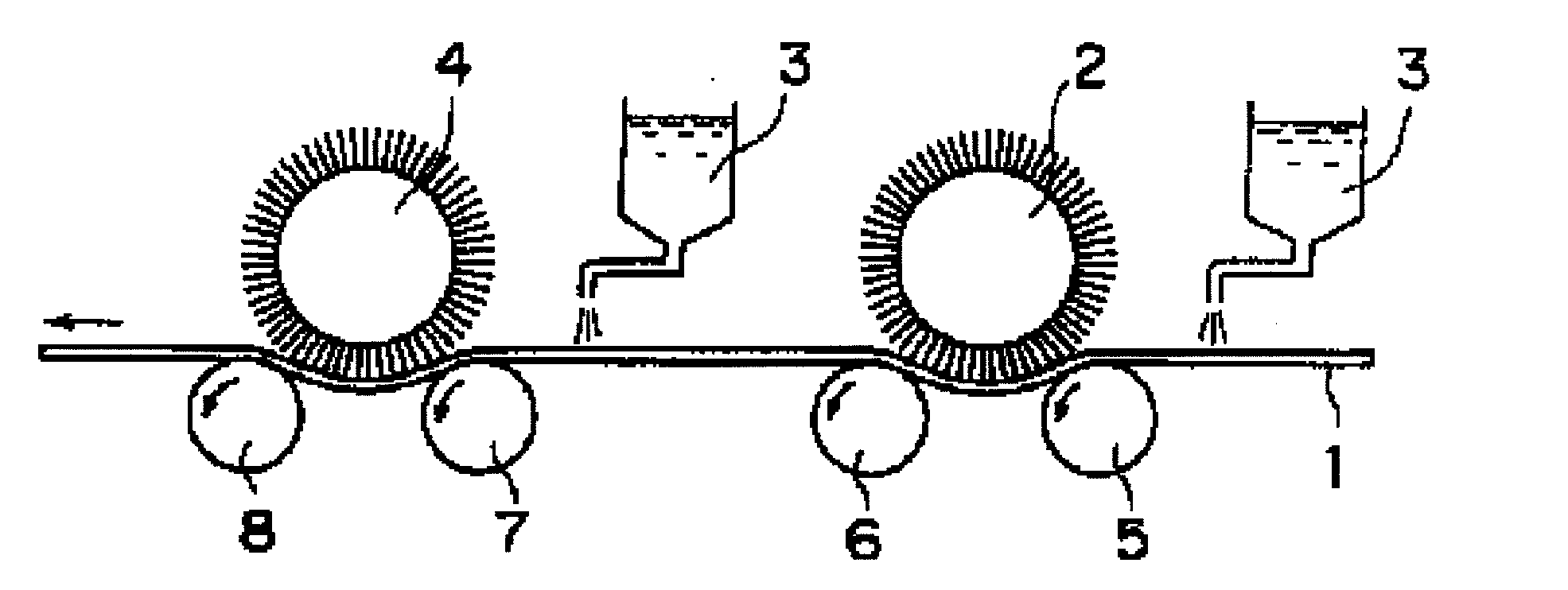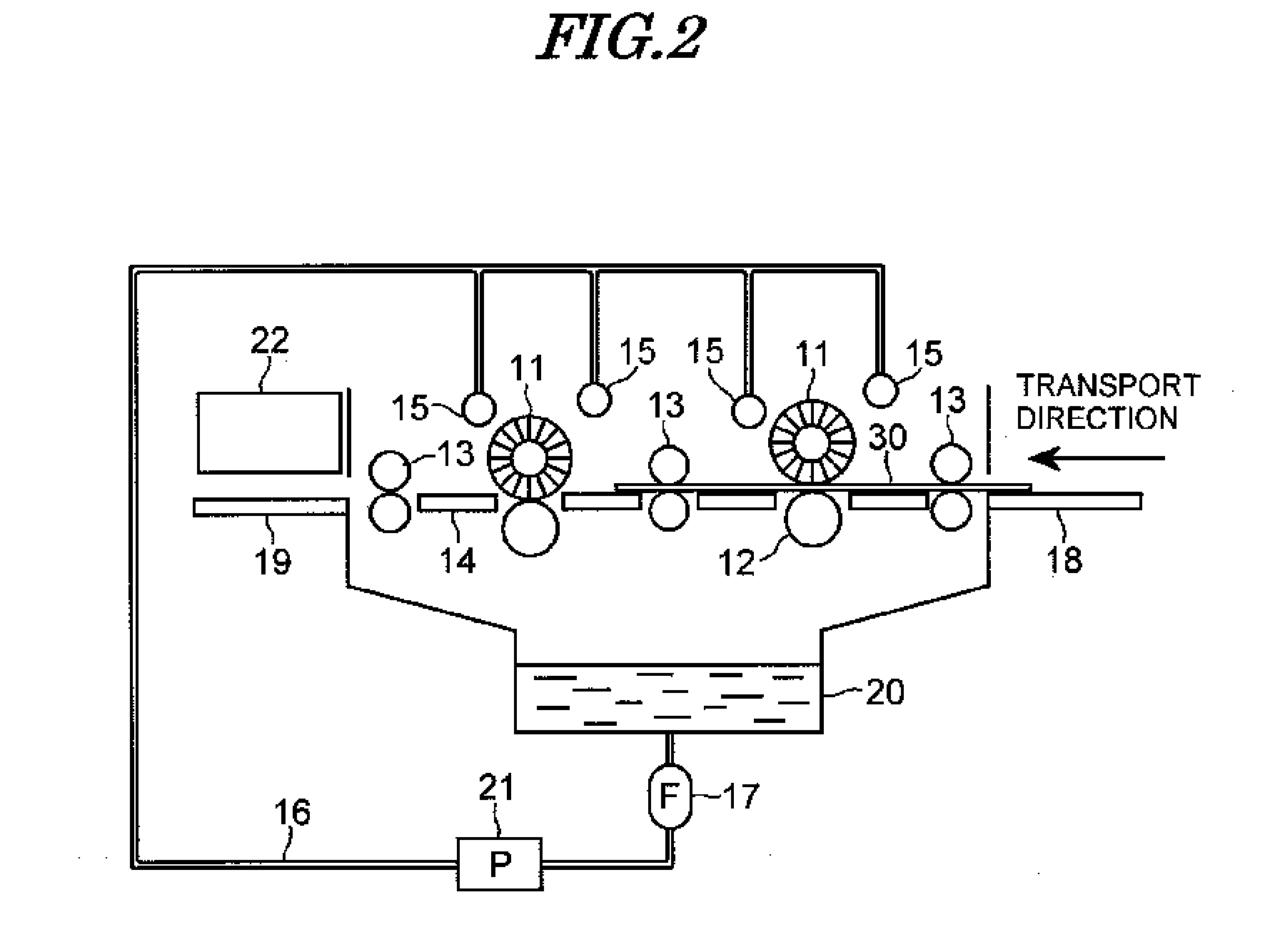Process for making lithographic printing plate
a technology of lithographic printing and process, applied in the field of lithographic printing plate making, can solve the problems of reducing the reducing the service life of the plate, so as to achieve good uniformity, reduce the service life, and simplify the processing steps
- Summary
- Abstract
- Description
- Claims
- Application Information
AI Technical Summary
Benefits of technology
Problems solved by technology
Method used
Image
Examples
examples
[0336]The present invention is explained below by way of Examples, but the present invention should not be construed as being limited thereto. In the Examples ‘parts’ means ‘parts by weight’ unless otherwise specified.
[0337]Furthermore, the figures on the bottom right of the parentheses showing the monomer units in the polymers shown in the Examples denote molar ratio unless otherwise specified.
(Preparation of Aqueous Dispersion of Silica-Containing Organic Resin Particles)
(Preparation of Art Pearl J-7P Aqueous Dispersion)
[0338]In order to improve dispersion stability, 3.0 parts by weight of a nonionic surfactant (Emalex 710, Nihon Emulsion Co., Ltd.) and 77.0 parts by weight of a mica dispersion (MEB-3L, Co-op Chemical Co., Ltd., solids content 3.4%) were added and mixed. 20 parts by weight of silica composite crosslinked acrylic resin particles (Art Pearl J-7P, Negami Chemical Industrial Co., Ltd., average particle size 6.6 μm) was added to this aqueous solution, and dispersion wa...
PUM
| Property | Measurement | Unit |
|---|---|---|
| pH | aaaaa | aaaaa |
| pH | aaaaa | aaaaa |
| thickness | aaaaa | aaaaa |
Abstract
Description
Claims
Application Information
 Login to View More
Login to View More - R&D
- Intellectual Property
- Life Sciences
- Materials
- Tech Scout
- Unparalleled Data Quality
- Higher Quality Content
- 60% Fewer Hallucinations
Browse by: Latest US Patents, China's latest patents, Technical Efficacy Thesaurus, Application Domain, Technology Topic, Popular Technical Reports.
© 2025 PatSnap. All rights reserved.Legal|Privacy policy|Modern Slavery Act Transparency Statement|Sitemap|About US| Contact US: help@patsnap.com



